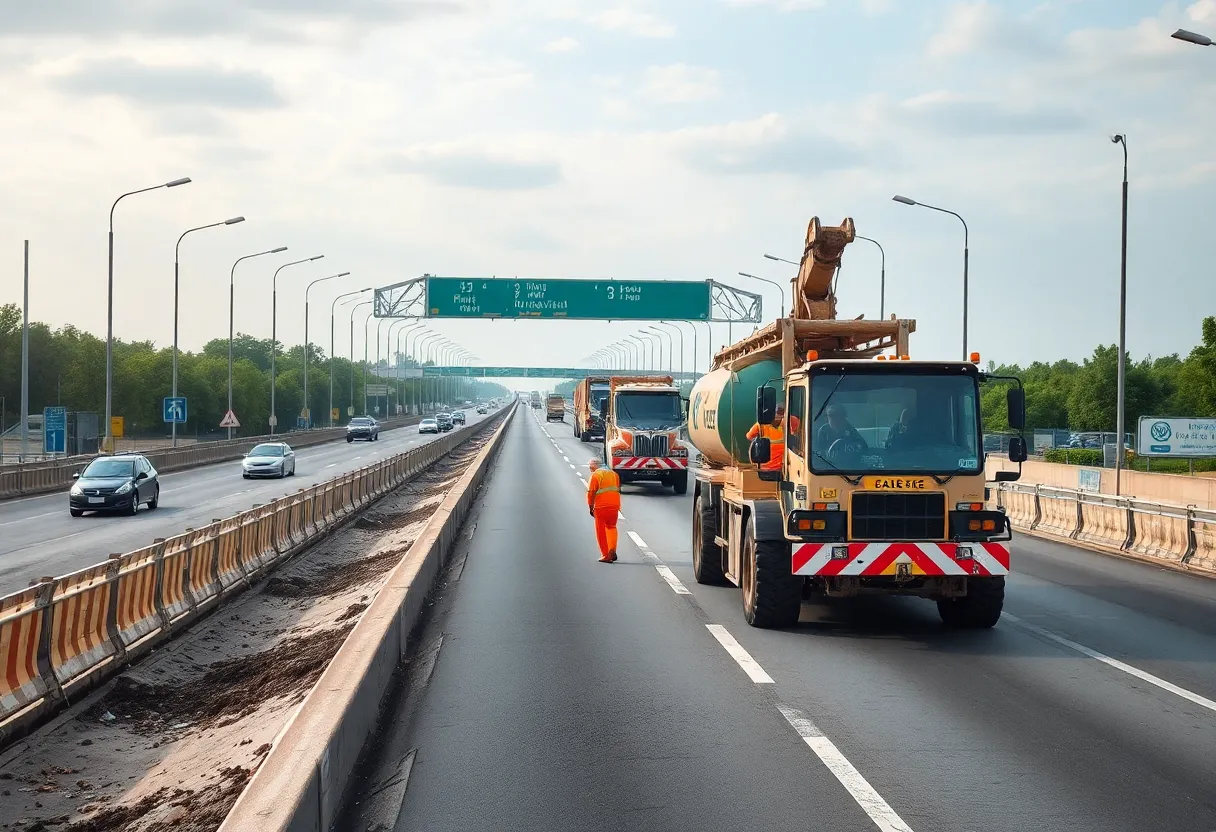Washington, D.C., August 14, 2025
News Summary
Rep. Sam Graves has outlined four essential priorities for the upcoming surface transportation reauthorization bill as Congress prepares to address funding and key focuses for highway and transit infrastructure projects. With projections indicating potential insolvency of the Highway Trust Fund by 2028, lawmakers are urged to prioritize formula funding, streamline permitting processes, increase state flexibility, and identify new revenue sources. Environmental review reforms and alternative funding mechanisms, such as vehicle-miles-traveled fees, are also considered crucial for ensuring robust infrastructure support in the years to come.
Lawmakers outline four priorities for next surface transportation bill as Highway Trust Fund concerns rise
A top member of the House transportation and infrastructure committee outlined four priorities for the forthcoming surface transportation reauthorization, signaling policy directions and funding choices that will shape highway and transit projects for years to come. The legislation is still in its early planning stages, and Congress has more than a year to finalize details before the expiration of the current authorization on September 30, 2026. A looming funding challenge adds urgency: the Highway Trust Fund is projected to reach insolvency by 2028.
The discussion line up comes as the Department of Transportation and key lawmakers align with major construction industry groups on priorities for funding and project delivery. Industry groups are pressing to prioritize formula funding over discretionary grant programs, arguing that formula programs are the most efficient way to allocate funds to states. The previous large package, the Infrastructure Investment and Jobs Act of 2021, allocated more than $560 billion to the DOT, including a $305 billion five-year surface transportation reauthorization. Discretionary grant funding is typically slower to spend than formula funds, a point noted by industry observers.
Rep. Sam Graves, who chairs the House transportation and infrastructure committee, highlighted four key goals for the upcoming bill: prioritizing formula funding, permitting reform to shorten project timelines, providing states more flexibility, and identifying new revenue sources for the Highway Trust Fund. These priorities are being discussed in concert with policymakers and industry groups who seek to maintain momentum on modernization while addressing funding gaps.
What policy mechanisms are gaining traction?
One notable policy mechanism under consideration is expanding the use of NEPA Assignment, which would let states take on responsibility for National Environmental Policy Act reviews. So far, eight states have pursued NEPA Assignment, with reports of improved project delivery timelines in those jurisdictions. In parallel, recent agreements between the DOT and state transportation departments aim to speed up project timelines and reduce overall costs. Advocates also want to expand the One Federal Decision policy to further streamline environmental reviews, with the goal of shortening the time required to finish projects.
Funding outlook and revenue ideas
The Highway Trust Fund currently relies largely on the federal gas tax, a rate that has not been raised since 1993. Lawmakers are exploring new revenue sources to shore up the fund, including registration fees on electric and hybrid vehicles. Inflation considerations are driving calls to index transportation user fees to inflation to protect purchasing power, while some proposals include vehicle-miles-traveled (VMT) fees as an alternative or supplement to the gas tax and EV/hybrid fees. Major social and industry groups have proposed substantial increases for public transit and rail over a five-year horizon—$138 billion for transit and $130 billion for passenger rail—aligning with the scale of the earlier authorization and the desire to expand mobility options.
Overall, lawmakers and industry participants emphasize the need to maintain or expand funding levels while accounting for inflation and the rising cost of materials and labor. The next reauthorization is also expected to weigh the effectiveness of formula funding versus discretionary grants, with many arguing for a steady, predictable funding stream that states can rely on for multi-year projects. The balance of policy goals—speeding up environmental reviews, providing flexibility to states, and exploring new revenue sources—reflects a broader effort to keep projects moving in a shifting fiscal environment.
In summary, the drive to reform project delivery, secure stable funding, and modernize the framework for highway and transit investments remains central as the country prepares for a multifaceted reauthorization process that will influence infrastructure decisions for years to come.
Frequently Asked Questions
What is the purpose of the upcoming surface transportation reauthorization bill?
To set funding levels and policy priorities for highway and transit infrastructure projects for multiple years.
What are Rep. Graves’ four priorities?
Prioritizing formula funding, permitting reform to shorten project timelines, providing states more flexibility, and identifying new revenue sources for the Highway Trust Fund.
Why is the Highway Trust Fund a concern?
The fund is projected to reach insolvency by 2028, creating pressure to identify sustainable funding sources for highway and transit projects.
What funding sources are being considered besides the gas tax?
Possible sources include registration fees for electric and hybrid vehicles, indexing of user fees to inflation, and vehicle-miles-traveled fees, among others.
What is NEPA Assignment and why does it matter?
NEPA Assignment allows states to take on responsibility for environmental reviews under the National Environmental Policy Act, which can speed up project delivery; eight states have participated so far.
Key features chart
Deeper Dive: News & Info About This Topic
Additional Resources
- ENR: Construction Groups Float Goals for Next Surface Transportation Funding Legislation
- Wikipedia: Transportation in the United States
- Transport Topics: Sam Graves Tapped Again
- Google Search: Surface Transportation Reauthorization Bill
- Roll Call: In a Party of Firebrands, Graves Sidesteps Limelight
- Encyclopedia Britannica: Highway Trust Fund





